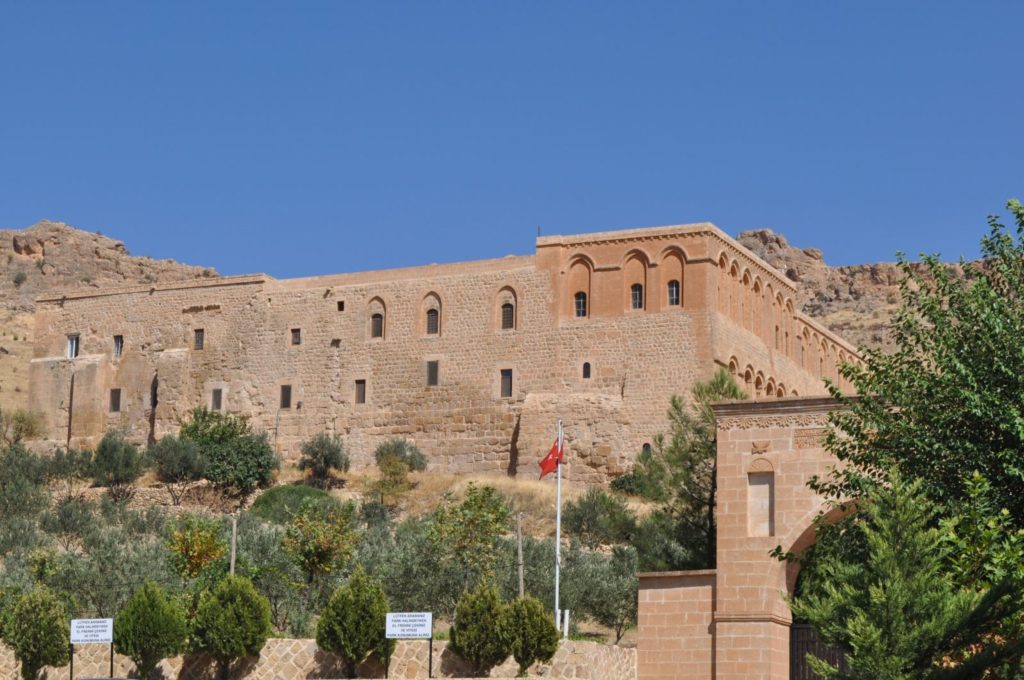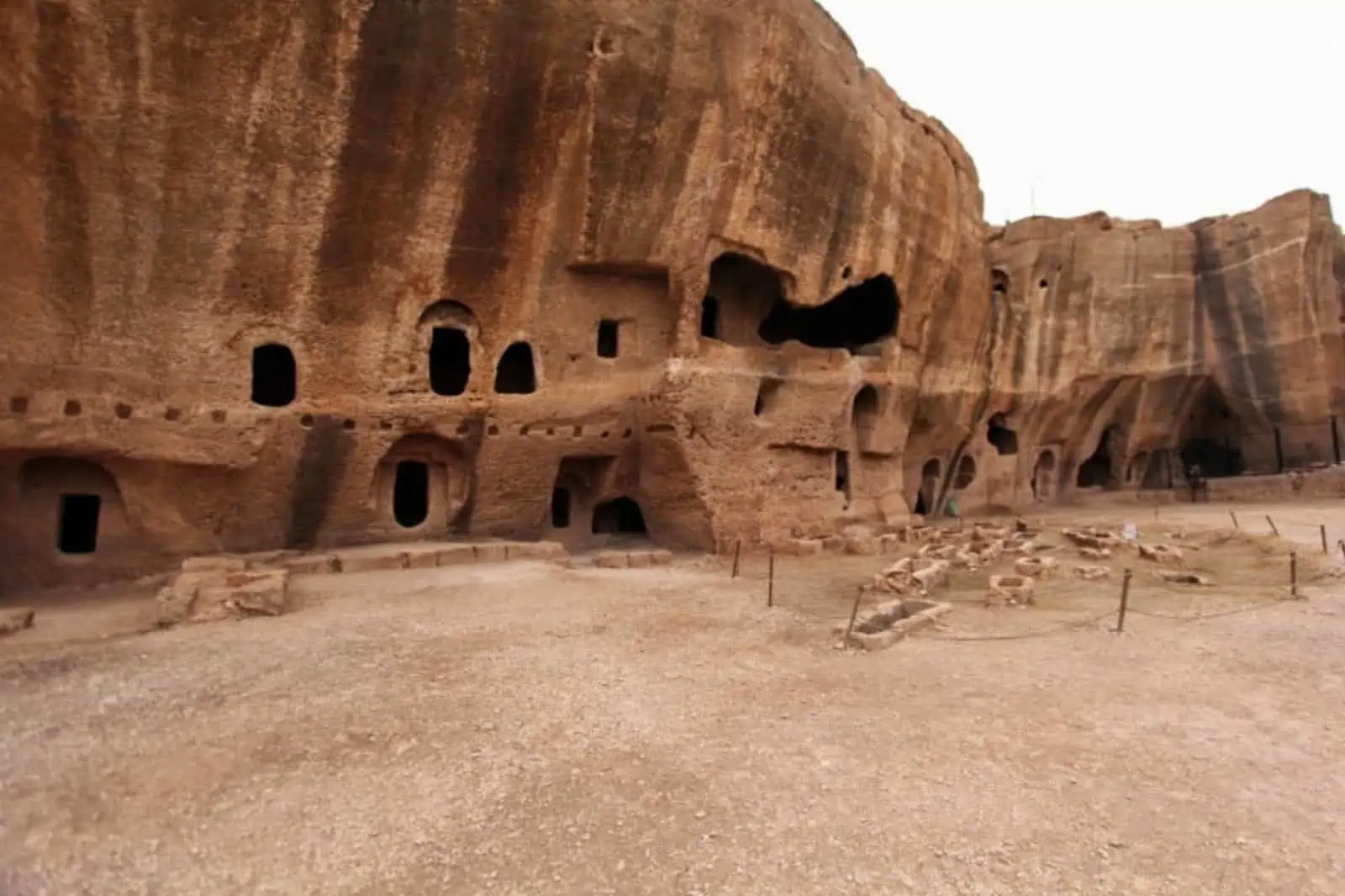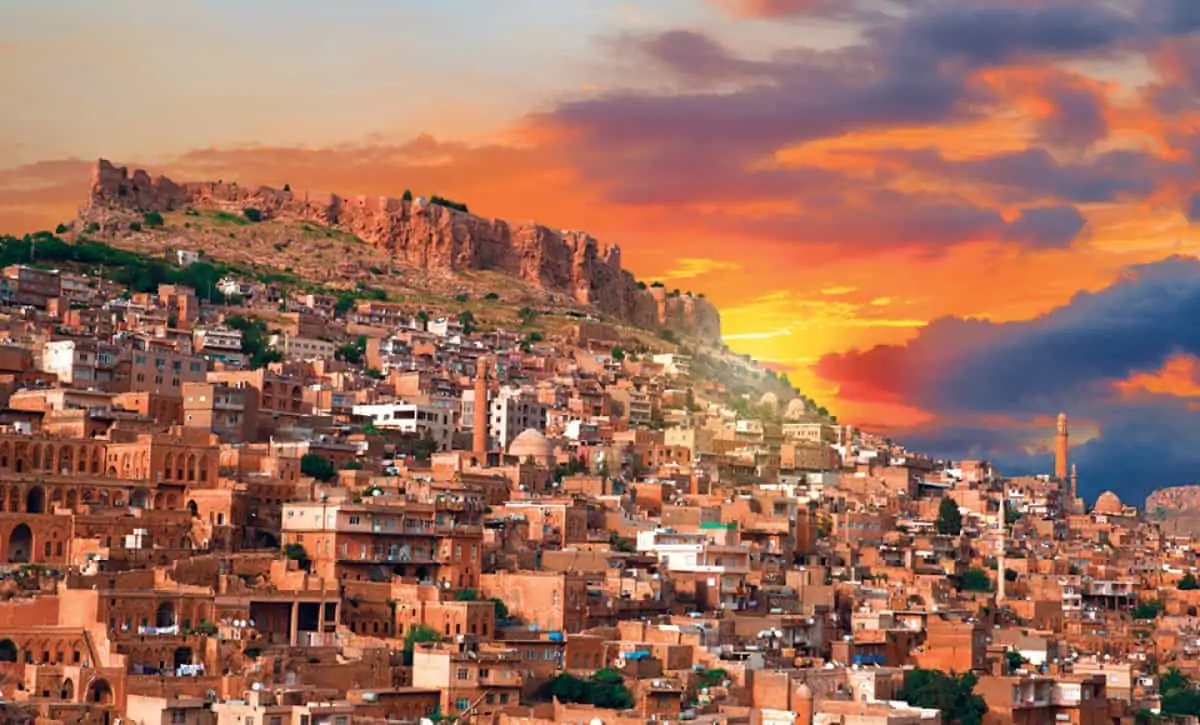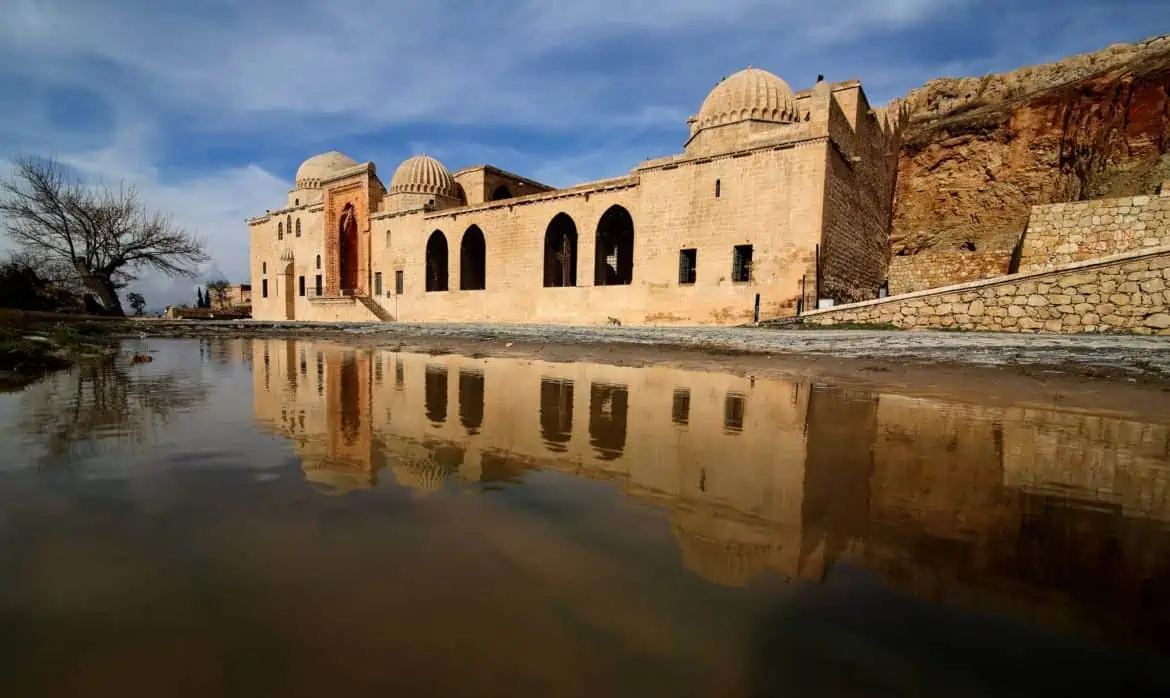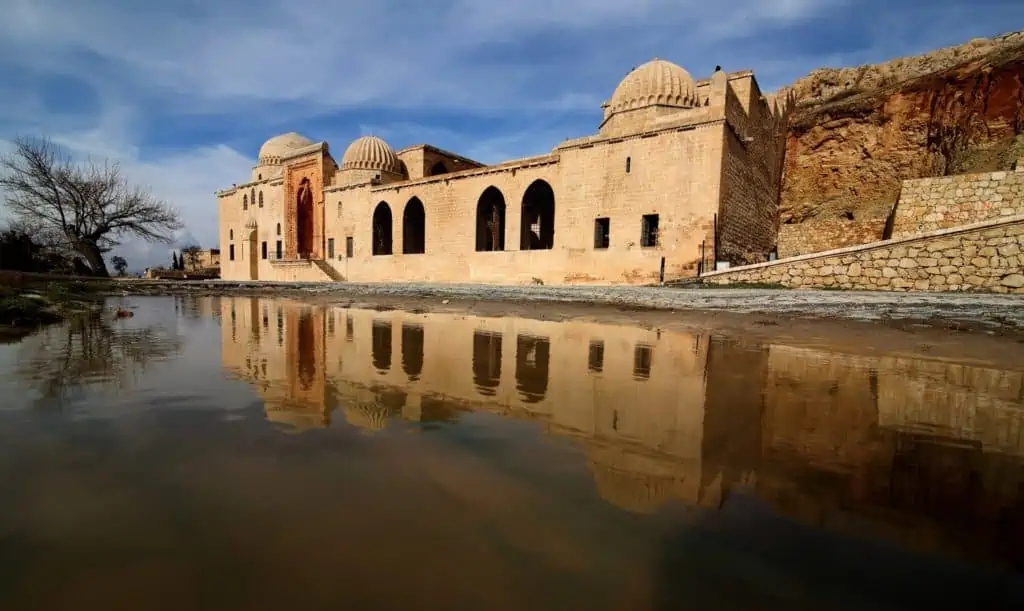Kubilayhan Doğukan
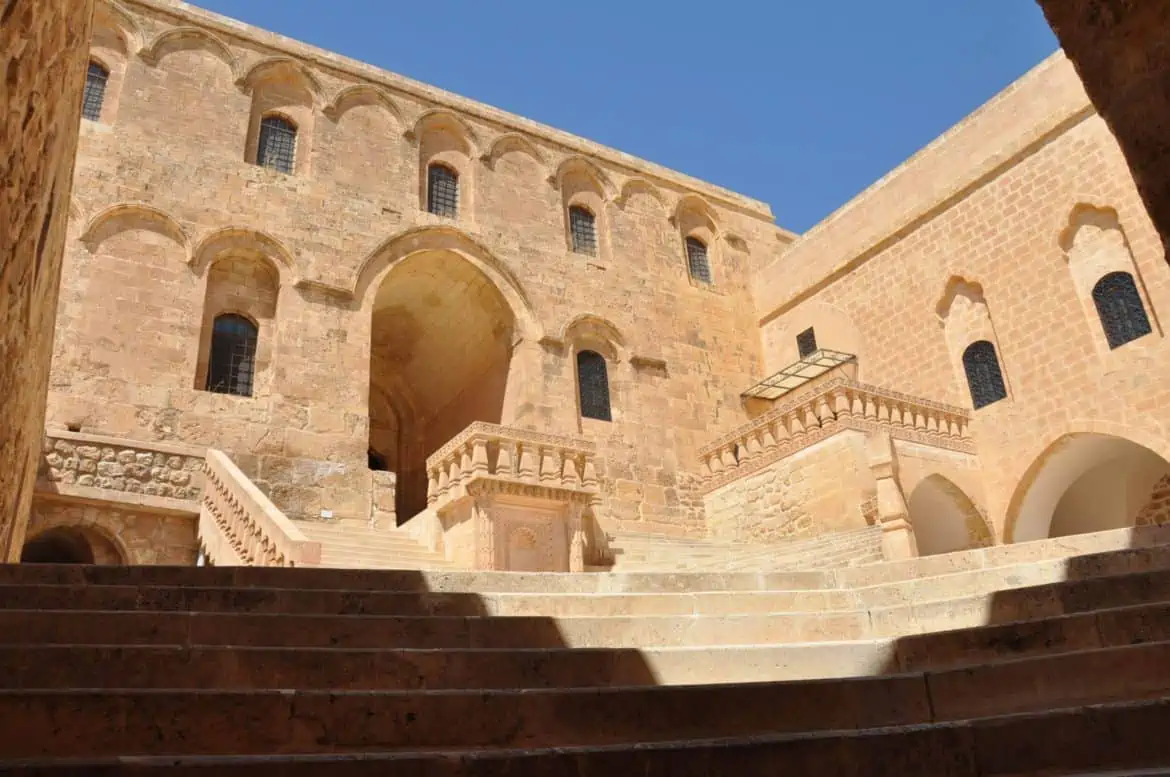
Deyrulzaferan Church, which is 4 km away from the old Mardin, is one of the most important belief centers of the Syriac ancient community. When we look at the past of the monastery, our ancestors, who considered the sun as a god before Christ, built the Temple of the Sun here. A complex that was later used as a castle by the Romans was built on this Sun Temple. With the withdrawal of the Romans from the region, St. Şleymun brought the bones of some saints here and turned the castle into a monastery.
Etymologically, “DEYR” means “a building or a monastery consisting of many buildings, established on mountain tops or outside towns, where Christian monks and nuns live” in Arabic. In the middle age of the 15th century, the monastery began to be called Deyrulzafaran (Saffron Monastery) due to the saffron plant that was grown around this monastery and used in its plaster during the construction.
Deyrulzaferan Church, which is 4 km away from the old Mardin, is one of the most important faith centers of the ancient Syriac community. When we look at the monastery, our ancestors who accepted the sun as a god before Christ built the Temple of the Sun here. A complex that was later used as a castle by the Romans was built on this Temple of the Sun. With the withdrawal of the Romans from the region, St. Şleymun brought the bones of some saints here and turned the castle into a monastery.
For this reason, the Monastery was formerly known as the Mor Şleymun Monastery. After the Metropolitan of Mardin and Kefertüth Aziz Hananyo made a major renovation starting in 793, the monastery was known as Mor Hananyo Monastery after him.
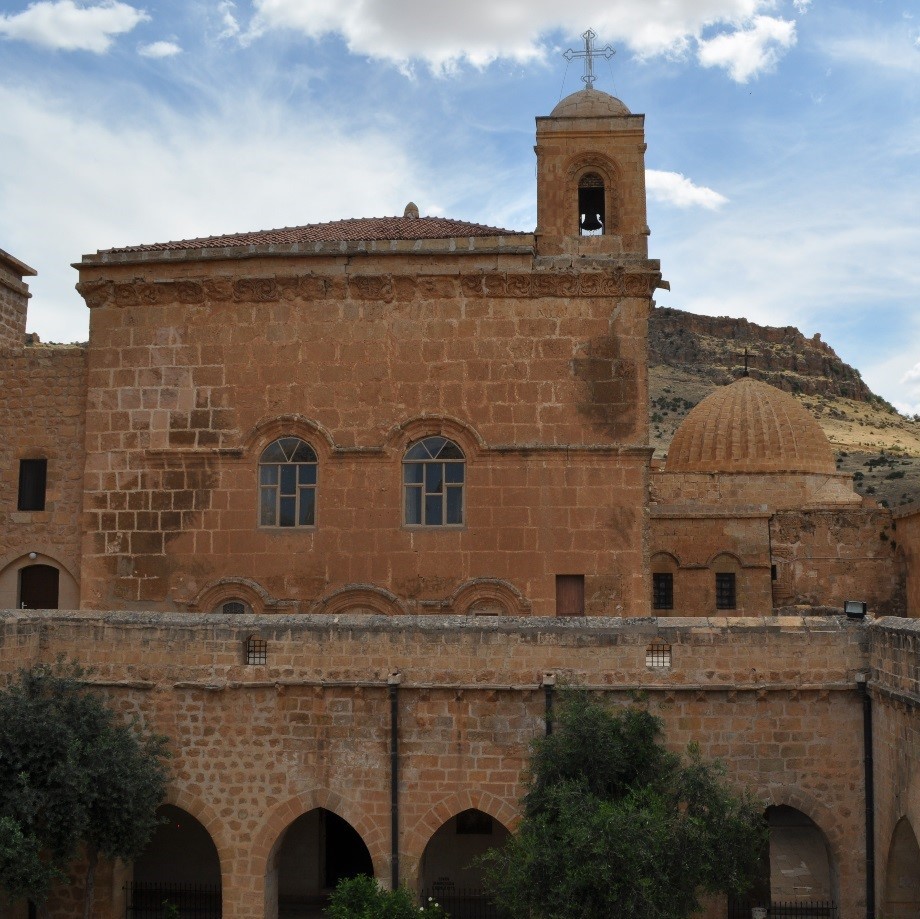
This ancient structure, which has a 4500-year-old Temple of the Sun underneath, was the center of all Assyrian patriarchates from 1116 to 1932. 53 Assyrian Patriarchs and metropolitans are buried in the monastery.
Deyrulzafaran Monastery, which draws people’s attention with its domes, arched columns, wooden handicrafts, and stone embroidery in the interior and exterior, was one of the religious education centers of the Syriac Church throughout its long history. The person who brought the first printing press to the region was the 4th Petrus, who was the patriarch of this monastery and died in 1895. In 1874, during a visit to England, he purchased a printing press and brought it to the monastery in 1876.
In the printing house, books in Arabic, Ottoman, and Turkish, especially in Syriac, were published until 1969, and a monthly magazine called Öz Hikmet until 1953. Some of the pieces remaining from the printing house are exhibited in the monastery, and some are exhibited in the Kırklar Church in Mardin.
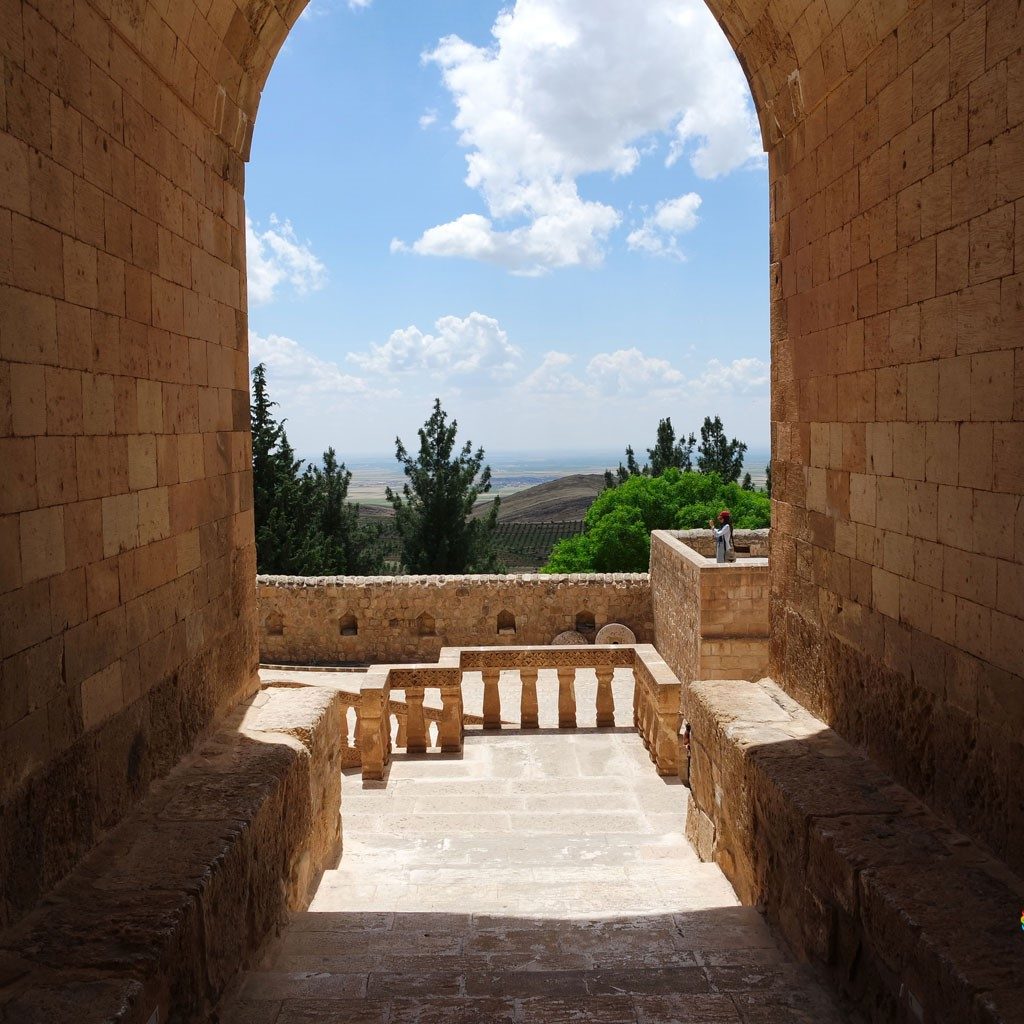
Deyrulzafaran Monastery remains an important religious center of the Syriac Church today
Today, the monastery is one of the important religious centres of the Syriac Church. Deyrulzafaran Monastery, the residence of the Metropolitan of Mardin, is still visited by Assyrians scattered all over the world.
Deyrulzafaran Monastery, which is open to tourism, is open to visitors until 5 pm, and there is also a cafe and souvenir shop for visitors.
